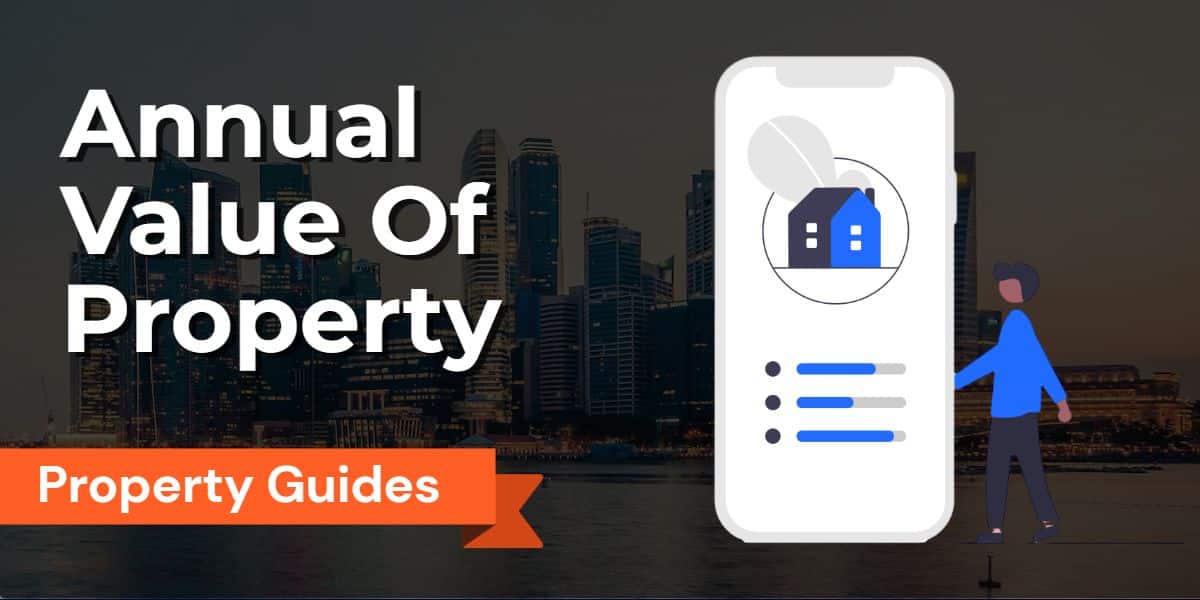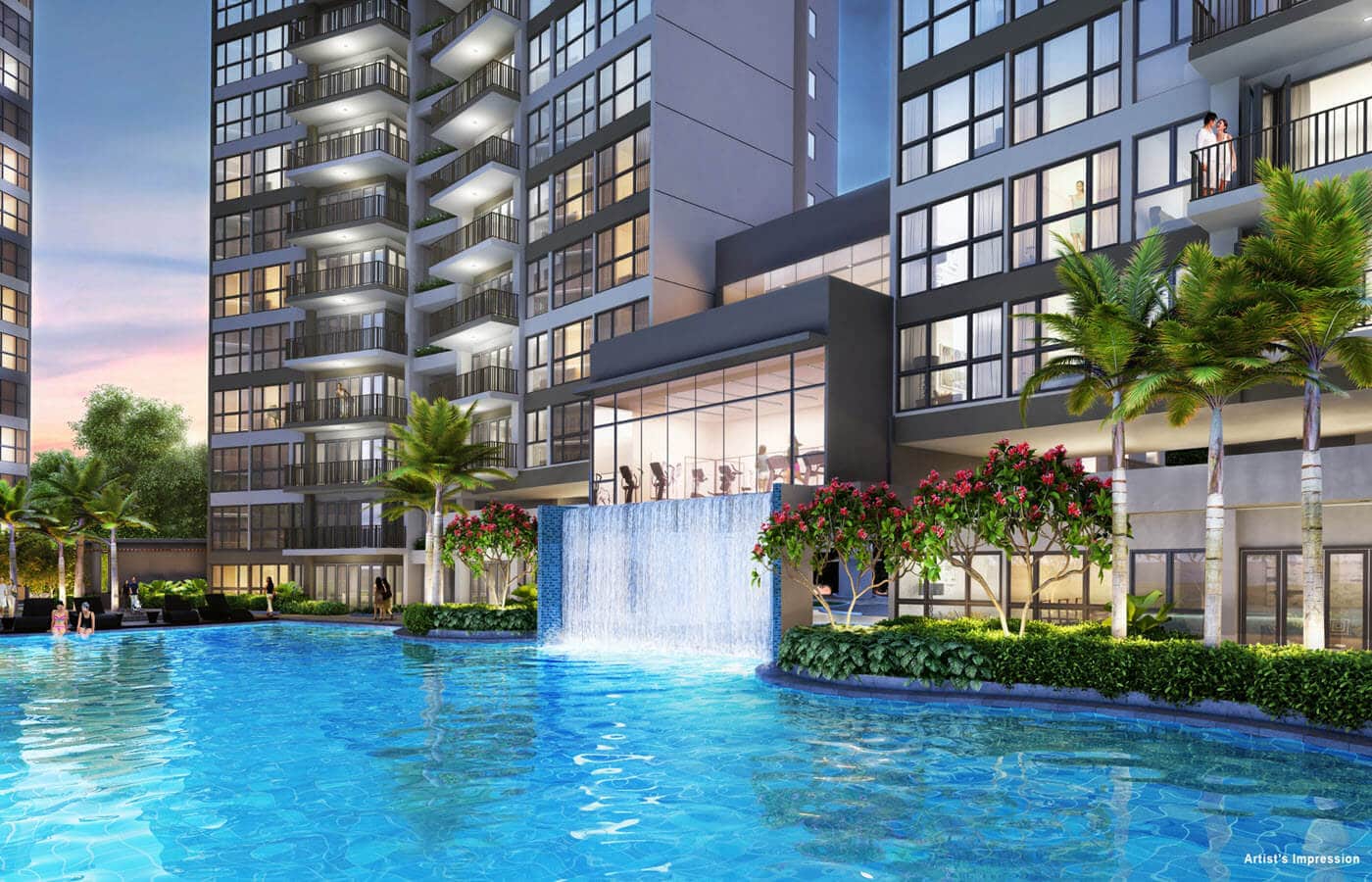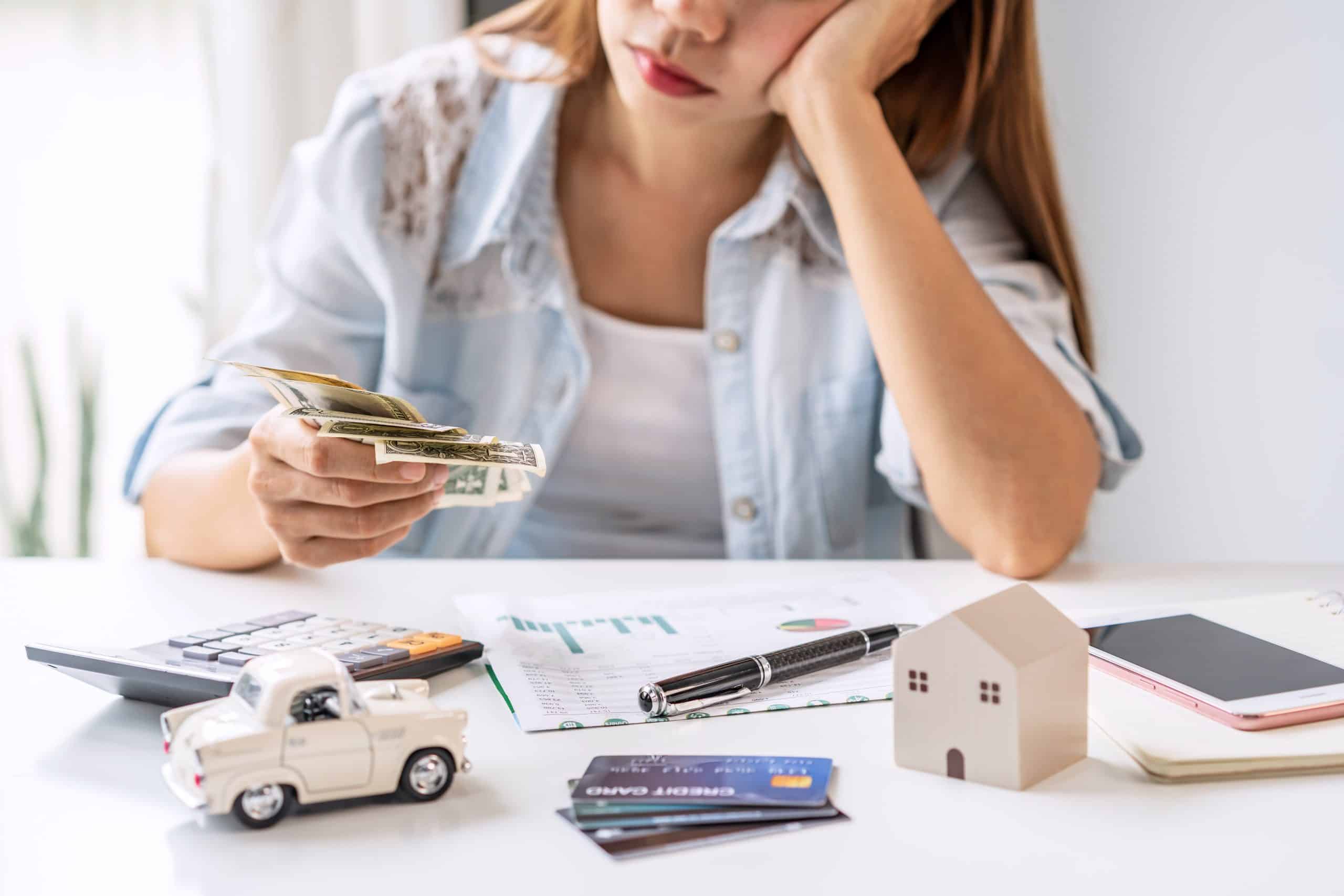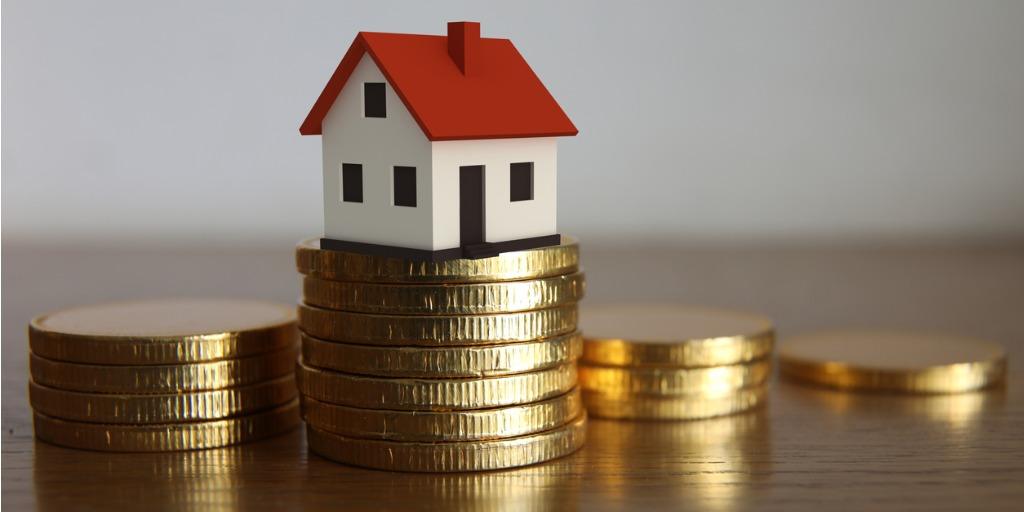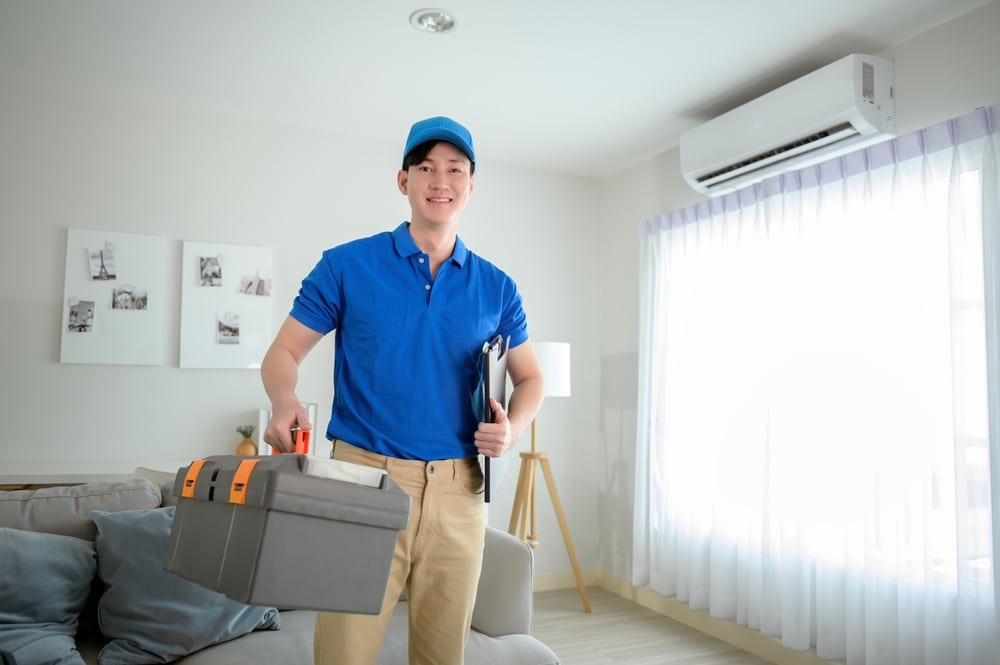
Discover the world of hdb electrical loading management in HDB flats and why homeowners must understand its importance.
Electrical load refers to the total demand for electricity from appliances and devices within a home, and exceeding the fixed limits can compromise safety and reliability.
Learn how the electrical load is determined in HDB flats and the potential consequences of high electrical load, such as increased bills and power trips.
Key Takeaways
| Topic | Key Takeaway |
|---|---|
| Importance of Electrical Load in HDB Flats | Understanding the electrical load of a home is crucial to ensure system safety and reliability and avoid power disruptions. |
| Determining Electrical Load in HDB Flats | Electrical load in HDB flats is predetermined based on the size and age of the unit, allowing for simultaneous device usage. |
| Consequences of High Electrical Load | High electrical load leads to higher bills, power trips, and the risk of electrical fires. |
| Electrical Installation Requirements for HDB Flats | HDB has comprehensive guidelines for electrical installations, including compliance with regulations and inspections. |
| Components of an HDB Electrical System | Main switches, MCBs, and earth leakage circuit breakers are key components that ensure safe power supply in HDB flats. |
| Importance of Engaging a Licensed Electrician | Hiring a licensed electrician ensures compliance, safety, and high-quality work in HDB electrical upgrading. |
| Standard Power Supply for HDB Flats | HDB flats receive power from the national grid at 230V AC, 50Hz, with 40-amp main switches for power distribution. |
| Power Consumption in HDB Homes | Average HDB homes consume around 300 kWh per month, influenced by factors like appliance type, load, and usage behavior. |
| Benefits of Upgrading HDB Electrical Systems | Upgrading improves power capacity, safety, reliability, energy efficiency, and accommodates modern appliances and devices. |
| Causes and Solutions for Power Trips | Power trips can result from overloading circuits, faulty equipment, or low-quality power supply, and can be prevented. |
| Significance of 40-Amp Main Switches | 40-Amp main switches play a critical role in electrical safety, tripping the supply in case of overload or short circuits. |
| Types of Electrical Switches for HDB Units | Single-pole, double-pole, and three-way switches are commonly used in HDBs for controlling lighting and appliances. |
| Upgrading Electrical Systems in HDB Blocks | Upgrading electrical systems in older HDB blocks improves safety, efficiency, and reduces the risk of power trips. |
| Approvals and Permits for HDB Electrical Work | Obtaining proper approvals and permits from HDB and SP Services is necessary to comply with regulations and avoid penalties. |
| Major Appliances and Power Consumption | Appliances like air-conditioners and refrigerators consume the most electricity, and energy-saving habits can reduce usage. |
Understanding the Importance of Electrical Load in HDB Flats
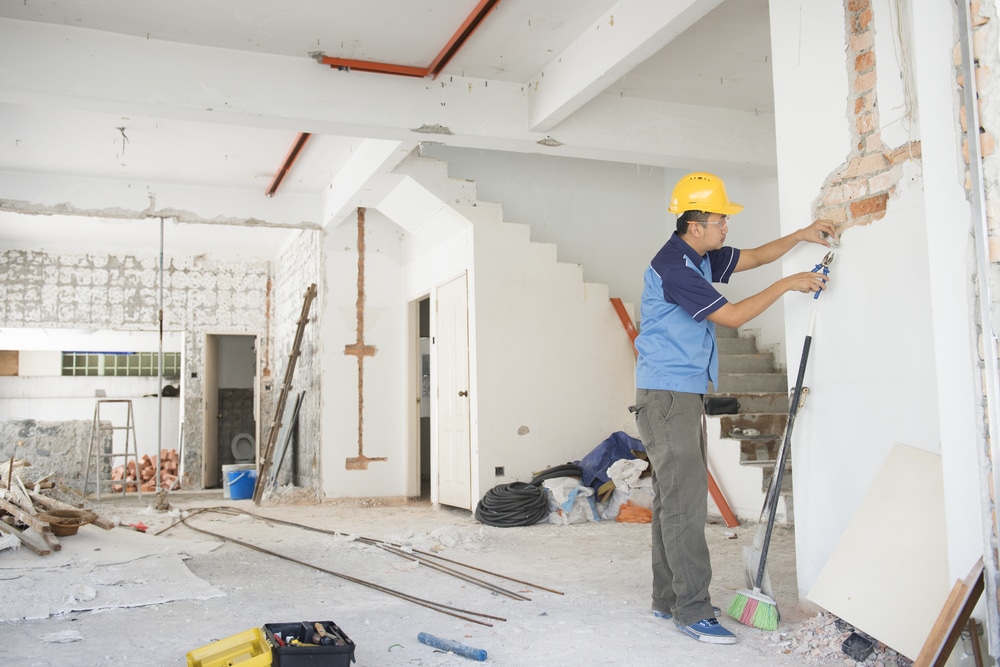
What is Electrical Load, and Why is it Important?
The electrical load is the total demand for electricity from electrical appliances, devices, or systems inside a home.
It’s essential to understand a home’s electrical load to ensure that it doesn’t surpass the fixed limits of the electrical system, which can compromise system safety and reliability.
Electrical load management is important for all HDB flat owners because of its impact on the availability of power to ensure household appliances operate as intended.
How is Electrical Load Determined in HDB Flats?
Electrical load in HDB flats is usually predetermined based on the size and age of the unit.
HDB’s Main Upgrading Programme provides older blocks with electrical rewiring, new electrical distribution boards, a 40-amp main switch, 15A power points, light switches, and other electrical installations to upgrade the main supply of these blocks.
Flats in newer blocks are usually provided with higher electric loading, which can accommodate the use of more heavy-duty electrical appliances.
This allows the occupants to operate a broad range of electrical devices simultaneously, with no power disruptions.
What are the Consequences of High Electrical Load?
Higher electrical loading in HDB flats usually leads to high power consumption, which results in higher bills and the risk of power trips.
Power trips often occur when the electrical load, i.e. the demand for electrical power, exceeds the capacity of the system to deliver power.
In some instances, overloaded electrical systems can cause electrical fires, which can lead to fatal accidents.
As a result, flat owners need to ensure that their electrical systems are up to code and that the electrical load of their flat is managed to avoid any accidents from happening.
Exploring the Electrical Installation Guidelines for HDB Units
What are the Electrical Installation Requirements
for HDB Flats?
The Housing and Development Board (HDB) has comprehensive installation guidelines for all electrical work involving HDB flats.
This includes the type of wires, the power load capacity, and the electrical connections that must be done in compliance with the prevailing guidelines and regulations.
All HDB electrical installations must be approved and inspected by the HDB before permitting occupation by the occupants.
What are the Main Components of an HDB
Electrical System?
The primary components of an HDB electrical system responsible for the safe and reliable power supply to various households include main switches, Miniature Circuit Breakers (MCBs), and earth leakage circuit breakers.
These components work together to detect any faults or power surges and isolate faulty circuits to prevent further electrical damage or injury.
How are Electrical Installations Inspected and
Approved in HDB Flats?
All electrical installations for HDB flats must comply with the guidelines provided by the Building and Construction Authority (BCA) and MUST be carried out by a licensed electrical worker.
The HDB will inspect the new electrical installation and issue an Electrical Installation Completion Certificate (EICC).
After that, the homeowner will apply for an HDB permit to notify the HDB of the electrical upgrading work done.
Once approved, the occupant can start using the new electrical systems in their HDB flats.
The Role of Licensed Electricians in HDB Electrical Upgrading
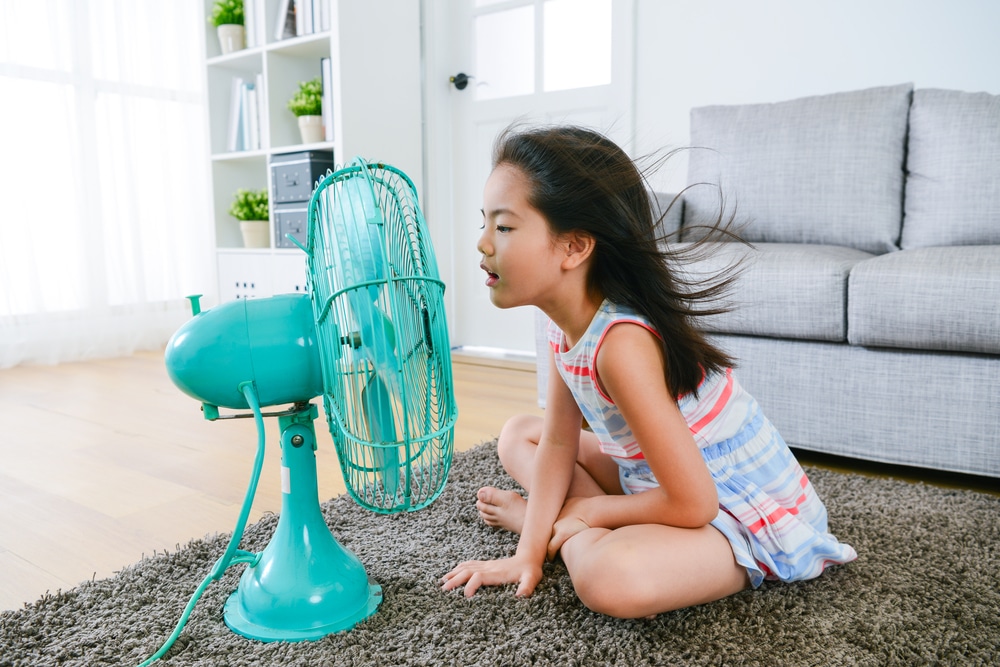
Why is it Important to Engage a Licensed Electrician for
HDB Electrical Work?
Carrying out electrical work is a complex operation that requires professional and skilled expertise.
A licensed electrician is trained to inspect, test and certify all electrical installations made in HDB flats.
This critical process ensures that the systems meet the appropriate safety and regulatory standards.
Engaging a licensed electrician for HDB electrical upgrading provides peace of mind and guarantees that all work carried out is compliant, safe, and meets the requirements.
What Qualifications and Certifications Should Licensed
Electricians Have?
Professional electricians working in Singapore must have a valid license issued by the Energy Market Authority (EMA).
This license indicates that the electrician has undergone thorough training in electrical installation work and has passed the necessary exams and assessments to provide electrical services in Singapore.
Additionally, electricians must be certified and accredited by relevant professional bodies to ensure industry compliance with regulations and best practices.
How Should Homeowners Choose a Reliable Licensed
Electrician for HDB Electrical Upgrading?
When looking for a licensed electrician to carry out HDB electrical upgrading, it is important to ensure they have an excellent record of their previous work, including customer reviews, testimonials, and certifications.
A licensed electrician must be able to provide these details, proving their ability to perform high-quality work within budget and timeframes.
Homeowners should also consider contacting multiple electricians to assess their rates, expertise, and work reputation to make the best decision for their needs.
Power Supply and Consumption in HDB Homes: An Overview

What is the Standard Power Supply for HDB Flats?
HDB flats are supplied with electrical power from the national power grid of Singapore, which usually supplies power at 230 volts AC with a frequency of 50 Hz.
Most HDB flats come with an electrical circuit rated at 40 amps and 220-ampere hours consumption.
Newer flats have higher power ratings, which correspondingly permits a higher electrical load capacity or usage.
How Much Electricity Does an Average HDB Home
Consume?
Average HDB homes tend to vary in the amount of electricity they consume due to factors such as the number of occupants, the type of electrical appliances used, and the electrical load of the flat.
However, an HDB home usually consumes about 300 kWh per month, equivalent to roughly $60 per month, significantly less than the national average electricity consumption of about 400 kWh per month.
What are the Factors that Affect Power Consumption in
HDB Flats?
The factors that affect power consumption in HDB flats include the type of electrical appliances used, the electrical load of the flat, the usage behavior of the occupants, and the age of the electrical devices used.
For instance, using energy-saving electrical appliances like air conditioners and refrigerators rated with a high star or energy efficiency rating tends to consume less power, resulting in lower bills and less stress to the HDB electrical system.
Dealing with Power Trips in HDB Flats: Causes and Solutions
Different sources of power trips in HDB flats
An Overloaded circuit is the most common reason for a power trip.
This occurs when too many appliances or devices are plugged into the same power strip.
This may also happen when devices like air-con compressors draw too much power.
Fuses and power circuit breakers can also trigger an electrical trip when they detect a dangerous condition.
Power trips may also occur due to a low-quality power supply from the electrical substation in the area.
Preventive measures and solutions to avoid power trips
The first way to avoid power trips is to reduce the number of appliances and devices plugged into a single power strip or socket.
To provide a better understanding of the risk of power trips, quality electrical equipment and the standard specification on their installation design should be considered.
Air-con installation should also be properly sized for the room they are in.
Avoid using power strips when possible, as they are often the main culprits of power trips.
Additionally, regular maintenance and upgrades to electrical infrastructure, such as electrical substations and the laying of new infrastructure, can help reduce the chance of power trips.
When to call an electrician to troubleshoot power trips
If power trips continue to occur even after taking preventive measures, it may be time to call an electrician to troubleshoot the problem.
An electrician can inspect the home for potential hazards, repair any faulty electrical equipment and identify any underlying electrical issues.
This will not only help to prevent power trips but also ensure the safety of the residents.
The Significance of 40-Amp Main Switches in HDB Electrical Systems
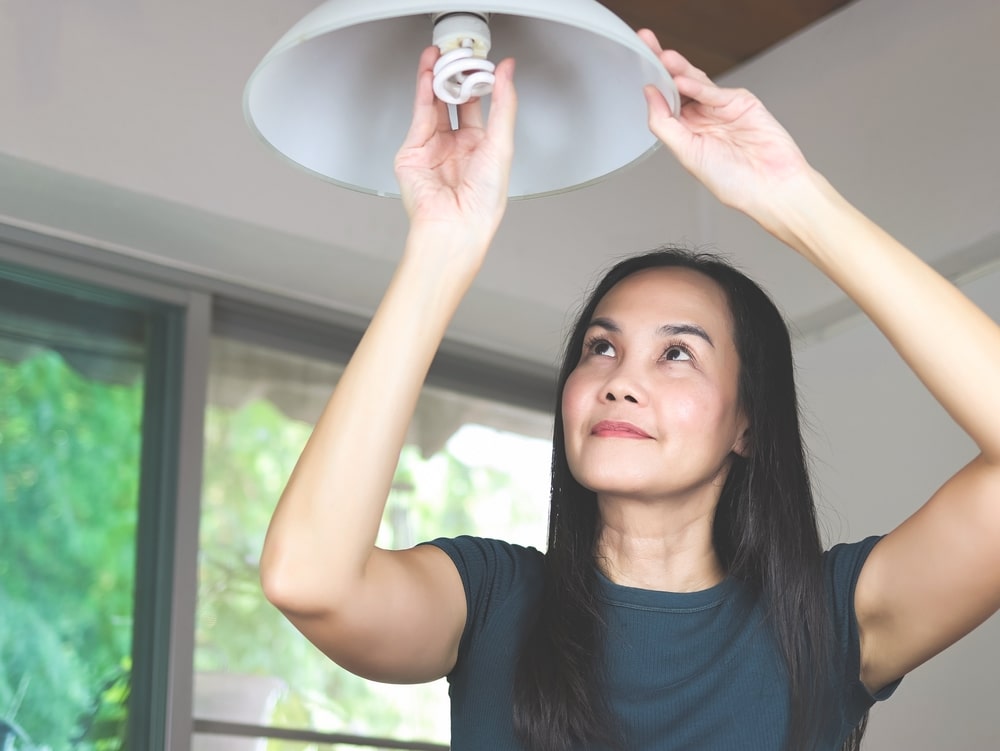
How 40-Amp main switches work in HDB units
40-Amp main switches are common in HDB flats and are critical in ensuring electrical safety.
They act as the main switch in an electrical circuit, allowing the electrical supply to be turned on or off.
They work by controlling the flow of electricity to the home and can disconnect the power in case of an electrical overload or circuit short-circuiting.
Why 40-Amp main switches are important in electrical
safety
Upgrading to a 40-Amp main switch is important in ensuring electrical safety in a home.
The 40-Amp main switch has an additional safety feature that makes it capable of tripping the supply if the current flowing in the circuit becomes too high.
This added feature helps to prevent major electrical accidents and fires.
When and how to upgrade your HDB’s main switch
Upgrading your HDB’s main switch depends on your electrical needs and the age of your HDB unit.
A unit that was built before 1994 will most likely have an old 20-Amp main switch that may need to be upgraded.
On the other hand, newer HDB blocks have been upgraded, and new blocks will have 40-Amp main switches installed.
If you are unsure about the state of your main switch or need to upgrade, contacting a licensed electrician for inspection and upgrading is recommended.
Types of Electrical Switches for HDB Units: Features and Usage
The different types of electrical switches commonly used in
HDBs
There are several types of electrical switches commonly used in HDBs.
Some of these switches include single-pole, double-pole, and three-way switches.
Single-pole switches are the most common type.
These switches have a single wire used for turning the power on and off.
Double-pole switches have two wires and are used for switching on and off larger appliances like electric ovens or water heaters.
Three-way switches have three wires and are used for controlling a light fixture from two different locations.
The features and functions of each type of switch
Single-pole switches are easy to install and are commonly used to control lighting fixtures.
Double-pole switches are used for controlling larger appliances and are required to handle a higher electrical load.
Three-way switches control light fixtures from different locations, making them ideal for larger HDB units with multiple rooms.
Choosing the right switch for your HDB unit’s needs
When choosing the right switch for your HDB unit’s needs, always consider the electrical specs of the appliance or device for which the switch is intended.
When in doubt, seek advice from a licensed electrician to ensure that you select the right switch for your needs and that it meets HDB’s electrical safety standards.
Understanding the Process of Electrical Upgrading in HDB Blocks
Why upgrading electrical systems is necessary in older HDB
blocks
Older HDB blocks have electrical systems designed to handle lower power needs, often lacking modern safety features needed for today’s electrical equipment.
This makes them less efficient and more prone to power trips.
Upgrading electrical systems in older HDB blocks is necessary to improve residents’ quality of life and reduce the risk of electrical hazards.
The steps involved in upgrading electrical systems in HDB
blocks
Upgrading electrical systems in HDB blocks involves replacing old electrical equipment with new, modern equipment designed to handle higher power loads.
This may include rewiring, upgrading to a 40-Amp main switch, and adding additional electrical outlets.
A licensed electrician must carry out all electrical work and adhere to HDB’s electrical safety standards.
The importance of hiring a licensed electrician to carry out
electrical upgrading
Electrical upgrading in HDB blocks is a complex procedure that involves electrical work, and not everyone is qualified to do it.
Hiring a licensed electrician with experience in HDB electrical upgrades is important to ensure that all electrical works are done safely, comply with all requirements and standards, and prevent the risk of electrical fires.
Ensuring Safety and Compliance: HDB Electrical Approvals and Permits
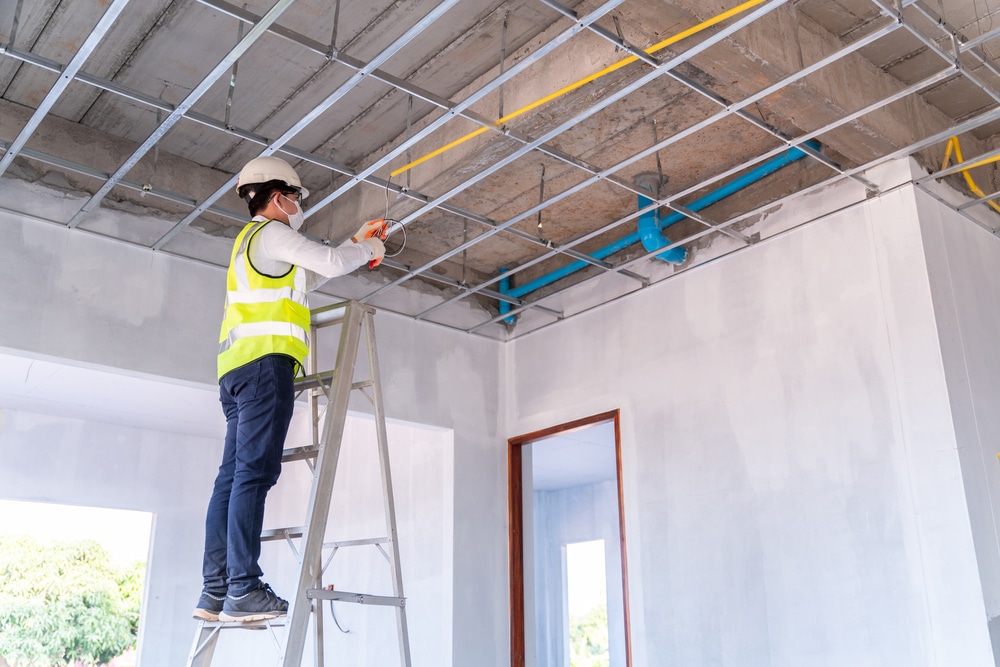
The necessary approvals and permits required for
electrical work in HDBs
Before carrying out any electrical work in an HDB, obtaining the relevant approvals and permits from HDB and SP Services Ltd is necessary.
This includes the HDB permit to install the electrical system and, if necessary, apply for a power supply increase from SP Services.
Failure to obtain proper permits and approvals before electrical work can lead to penalties and legal action.
The requirements for complying with HDB electrical
standards and regulations
All electrical work in HDBs must comply with HDB’s electrical safety standards and regulations.
This includes employing licensed electricians, using quality electrical equipment that meets the HBD standard, and ensuring that all electrical work is properly documented and registered.
This will ensure the resident’s safety and the electrical system’s longevity.
The consequences of non-compliance and illegal electrical
work in HDB units
Non-compliance and illegal electrical work can result in serious consequences, including fines or even imprisonment.
Such practices may cause major electrical hazards, leading to disastrous electrical fires.
Following HDB’s electrical safety standards and regulations is necessary to prevent these negative outcomes.
Exploring Major Appliances and Power Consumption in HDB Homes

What appliances typically consume the most electricity in
HDB homes?
Appliances like air-conditioners, water heaters, and refrigerators consume the most amount of electricity in HDB homes.
They are essential appliances for homeowners in Singapore due to the hot weather and the need for hot water showers.
A typical air-conditioner, for example, has a power consumption of 600 to 1500 watts per hour, depending on its size and capacity.
A refrigerator consumes between 2,000 and 6,000 watts depending on age, size, and energy efficiency rating.
How can homeowners reduce their power consumption to
prevent electrical overload?
Homeowners can reduce their power consumption by practicing energy-saving habits and by using energy-efficient appliances.
For example, opting for an air-conditioner with a higher energy efficiency rating can significantly reduce power consumption.
Energy-saving habits such as switching off unused lights and fans, unplugging unused appliances, and reducing the use of high-consuming appliances like water heaters can also help.
What are the common causes of power failure or power
trips in HDB homes?
Power failure or power trips in HDB homes can be caused by several factors, including overloading the electrical system, short circuits, and faulty electrical equipment.
Overloading is the most common cause of power trips, especially when high-consuming appliances like air-conditioners are used for extended periods or concurrently.
The Impact of Electrical Load on HDB Electrical Service Capacity
What is electrical load, and how does it affect HDB
electrical service capacity?
Electrical load refers to the total amount of power that electrical equipment and appliances consume in a home.
HDB electrical service capacity, on the other hand, refers to the total amount of power that can be supplied to an HDB flat.
The high electrical load can cause electrical service capacity overload, leading to power failures and trips.
What are the signs that indicate that my electrical load is
too high for my HDB flat?
Signs that indicate that your electrical load is too high for your HDB flat include flickering lights, low voltage alerts, and frequently occurring power trips.
These signs show that your electrical system is under stress and that you must upgrade your electrical capacity.
What are the solutions for managing high electrical loads in
HDB flats?
The solutions for managing high electrical loads in HDB flats include upgrading the electrical system, practicing energy-saving habits, and scheduling regular maintenance for electrical equipment.
Upgrading the electrical system involves increasing the capacity of the electrical service equipment, replacing old wiring, and installing additional electrical circuits.
HDB Electrical Distribution Board: Function and Maintenance

What is the function of the HDB electrical distribution
board, and why is it important to maintain it regularly?
The HDB electrical distribution board is a crucial component of the electrical system that distributes electrical energy evenly to all areas of an HDB flat.
Regular maintenance ensures the electrical distribution board functions effectively and reduces the risk of power failure and power trips.
What are the signs of a faulty electrical distribution board?
Signs of a faulty electrical distribution board include inconsistent power supply, overheating, and burning smells.
These signs indicate that the HDB electrical distribution board needs to be checked, repaired, or replaced.
How often should homeowners have their electrical
distribution board inspected and maintained?
Homeowners should have their electrical distribution board inspected and maintained by a qualified electrician at least once every three years.
However, if there are signs of faulty performance, maintenance services may need to be scheduled more frequently.
The Evolution of HDB Electrical Upgrading Programmes

What are HDB electrical upgrading programmes and when
did they begin?
The HDB electrical upgrading programmes were introduced in January 1994 as part of the Home Improvement Programme (HIP) by Mr.
Khaw Boon Wan, the then-Minister for National Development.
These programmes involved upgrading the electrical systems of older HDB apartment blocks to provide residents with higher electrical loading capacity.
What are the benefits of upgrading my HDB electrical
system?
Upgrading the HDB electrical system offers several benefits, including reducing the risk of power failure, increasing electrical capacity, and improving residents’ overall quality of life.
Upgraded electrical systems also provide residents with greater flexibility in using high-consuming appliances like air-conditioners and water heaters.
What is the process for applying for HDB electrical
upgrading?
The process for applying for HDB electrical upgrading involves submitting an application form to the Ministry of National Development.
Homeowners are advised to engage a qualified and reliable electrician to assess the electrical system and provide an installation report.
The installation report will provide an overview of the electrical upgrading required, the duration of installation, and the estimated cost.
Enhancing Quality of Life in HDB Flats through Electrical Upgrading
How does electrical upgrading enhance the quality of life in
HDB flats?
Electrical upgrading enhances the quality of life in HDB flats by improving the electrical capacity of the flat, reducing the risk of power failure, and allowing greater flexibility in using high-consuming appliances.
Upgraded electrical systems also provide homeowners with better lighting, improved ventilation, and more convenience in their daily lives.
What are the common electrical upgrades that
homeowners can consider?
Common electrical upgrades that homeowners can consider include upgrading the main electrical switch to 40 amps from the previous 20 amps, installing a higher-capacity MCB (Miniature Circuit Breaker) with a rating of 30A or above, replacing old wiring, and installing additional plug points for added convenience.
How can homeowners ensure they engage a qualified and
reliable electrician for their electrical upgrading work?
Homeowners are advised to engage a qualified and reliable electrician with proven experience in conducting electrical upgrading work.
A team of experienced electricians is recommended for larger projects that require expertise in different aspects, such as wiring installation, power graphics card installation, installation of ceiling fans and lights, and power failure recovery and repair.
Conclusion
In conclusion, understanding the importance of electrical load in HDB flats is crucial for homeowners to ensure the safety and reliability of their electrical systems.
The high electrical load can lead to increased power consumption, higher bills, power trips, and even electrical fires.
It is essential to manage the electrical load and comply with the electrical installation guidelines provided by HDB.
Engaging a licensed electrician for HDB electrical work is highly recommended to ensure compliance with safety and regulatory standards.
Licensed electricians possess the necessary qualifications and certifications to carry out electrical installations and upgrades.
When choosing a licensed electrician, homeowners should consider their track record, certifications, and customer reviews to make an informed decision.
Understanding the electrical load in HDB flats is crucial for ensuring safety and a reliable power supply.
It is important to manage the electrical load to avoid high power consumption, increased bills, power trips, and even electrical fires.
Following HDB guidelines for electrical installations, engaging licensed electricians, and upgrading electrical systems can enhance safety and efficiency.
Homeowners can improve electrical safety by choosing the right switches, preventing power trips, and upgrading to a 40-Amp main switch.
Obtaining necessary approvals and permits for electrical work in HDB units and complying with regulations to avoid penalties is essential.
Lastly, reducing power consumption through energy-saving habits and efficient appliances can prevent electrical overload.
Explore our other blog articles for more in-depth information on HDB electrical topics.
Finally, understanding the power consumption of major appliances in HDB homes can help homeowners make informed choices to reduce power consumption and prevent electrical overload.
Energy-saving habits and using energy-efficient appliances contribute to a more sustainable and cost-effective electrical system.
Frequently Asked Questions
What is HDB electrical loading?
HDB electrical loading refers to the maximum amount of electrical power that an HDB flat can handle without overloading the circuit.
It is determined by the capacity of the electrical wiring, switches, and other components installed in the flat.
How much electrical loading is provided with HDB flats?
HDB flats completed since Jan 1994 are provided with a 40-amp main switch, which can handle higher capacity equipment such as air-conditioners.
HDB flats completed before this date have 20-amp main switches.
Why are HDB apartment blocks upgraded?
HDB apartment blocks are upgraded to meet the electrical load demands of modern appliances and equipment.
New infrastructure such as electrical wiring, switches, and transformers are installed to support the raised capacity.
Who is responsible for the upgrading of HDB blocks?
The Minister for National Development of Singapore is responsible for upgrading HDB blocks.
Is the upgrading of HDB blocks costly?
Yes, upgrading of HDB blocks is a costly project as it involves the installation of new electrical infrastructure, such as transformers and circuit breakers.
What happens to HDB flats during upgrading?
HDB flats are provided with higher electrical loading during upgrading, which includes replacing main switches and installing new electrical components to support the higher power capacity.
Since when are HDB blocks provided with higher electrical loading?
HDB flats have been provided with higher electrical loading since Jan 1994, with the implementation of a 40-amp main switch.
What is the risk of overloading the electrical circuit in an HDB flat?
Overloading the electrical circuit in an HDB flat can cause power failure, electrical power trips, and damage to electrical appliances and equipment.
What should I do if I experience a power trip in my HDB flat?
In case of a power trip, turn off all electrical appliances and reset the circuit breaker.
If the power failure persists, seek the help of a licensed electrician to diagnose and repair the fault.













